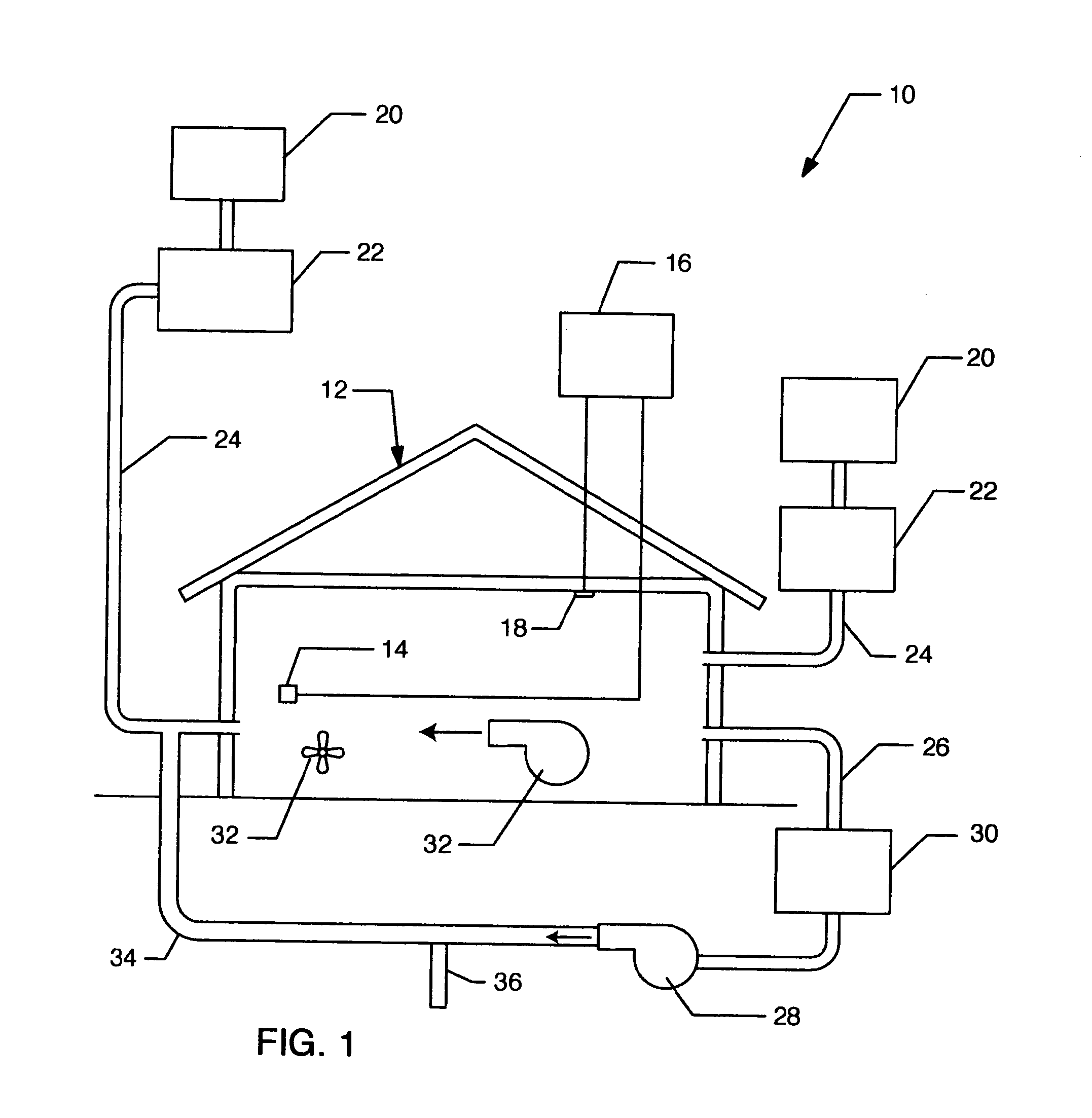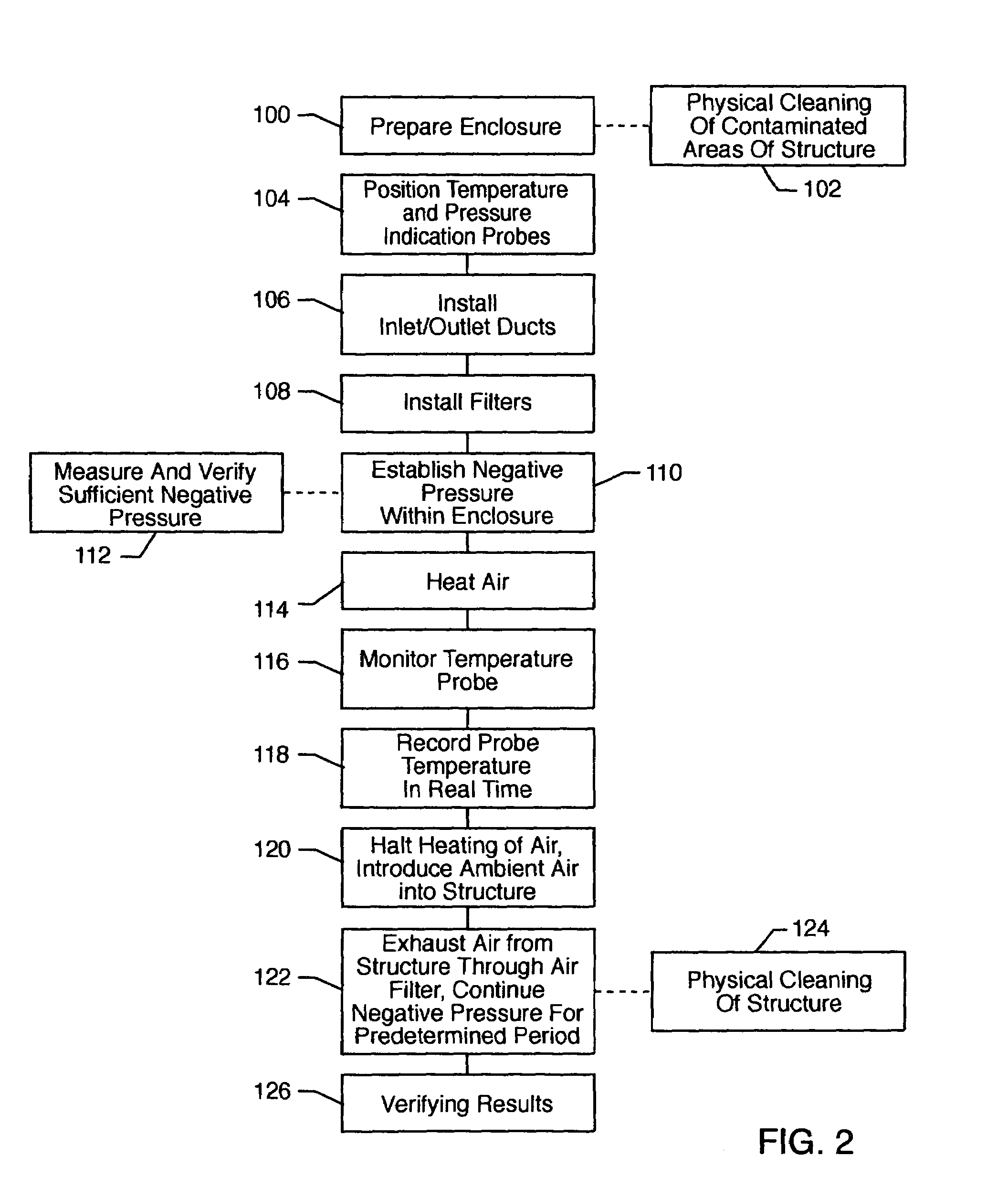Method of treating for pests
a technology for pests and methods, applied in the field of pest treatment, can solve the problems of pests in the structure, insects and rodents, stinging unsuspecting adults or curious children or animals, etc., and achieve the effects of other dangerous substances, reducing volatile organic compounds, and reducing the number of dead organisms
- Summary
- Abstract
- Description
- Claims
- Application Information
AI Technical Summary
Benefits of technology
Problems solved by technology
Method used
Image
Examples
Embodiment Construction
[0041]As shown in the accompanying drawings for purpose of illustration, the present invention is related to a system and method for treating buildings and enclosures. In accordance with the present invention, heating of the air is primarily used to treat such enclosures and buildings so as to remove and / or denature harmful organic substances, such as VOCs, microbiological agents such as bacteria and viruses, and pests such as bed bugs, scorpions, etc. and their allergens from an enclosure.
[0042]Referring now to FIG. 1, there is seen a schematic diagram showing the components of the system of the present invention, referred to generally by the reference number 10, in use treating an enclosed structure 12. The enclosed structure 12 is typically a commercial or residential building, but can also be a vehicle, such as an airplane, bus, boat, automobile, etc.
[0043]A plurality of temperature sensors 14 are positioned at predetermined locations within the structure to monitor the temperat...
PUM
| Property | Measurement | Unit |
|---|---|---|
| temperature | aaaaa | aaaaa |
| time | aaaaa | aaaaa |
| shrinkage | aaaaa | aaaaa |
Abstract
Description
Claims
Application Information
 Login to View More
Login to View More - R&D
- Intellectual Property
- Life Sciences
- Materials
- Tech Scout
- Unparalleled Data Quality
- Higher Quality Content
- 60% Fewer Hallucinations
Browse by: Latest US Patents, China's latest patents, Technical Efficacy Thesaurus, Application Domain, Technology Topic, Popular Technical Reports.
© 2025 PatSnap. All rights reserved.Legal|Privacy policy|Modern Slavery Act Transparency Statement|Sitemap|About US| Contact US: help@patsnap.com



